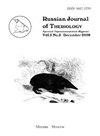洞穴的土壤硬度与日本小鼹鼠Mogera imaizumii(Talpidae)的使用频率有关
IF 0.6
4区 生物学
Q4 ZOOLOGY
引用次数: 0
摘要
研究了日本小鼹鼠Mogera imaizumii洞穴内的土壤硬度,以评估常规洞穴(高使用频率,Rb)和临时洞穴(低使用频率,Tb)的地表、侧壁和底部硬度的差异。我们分析了68个洞穴点的使用频率,方法是在每个洞穴点设置陷阱式管式陷阱,触发鼹鼠的反应,记录鼹鼠的使用情况,而不捕捉它们。这些穴点在设置16小时后分别根据反应的存在或不存在而被分类为Rb或Tb;20个洞穴点被确定为Rb,48个被确定为Tb。没有观察到Rb和Tb的频率与深度有关的差异,深度与硬度的垂直梯度有关。此外,在早春至夏季,新发现的洞穴更频繁地被发现是T b而不是R b,这似乎与鼹鼠的传播有关。此外,我们测量了68个洞穴点的地表、侧壁和洞穴底部的土壤硬度。在比较土壤硬度和洞穴使用频率之间的关系时,我们发现Rb的底部明显比Tb的底部更硬。因此,Rb底部土壤的硬度被认为是由鼹鼠频繁踩踏引起的。使用本文章由计算机程序翻译,如有差异,请以英文原文为准。
Soil hardness of burrows related to the usage frequencies of the lesser Japanese mole, Mogera imaizumii (Talpidae)
. The soil hardness inside burrows was studied in the lesser Japanese mole, Mogera imaizumii , to evaluate differences in the hardness of the ground surface, sidewalls, and bottoms of regular burrows (high usage frequency, R b) and temporary burrows (low usage frequency, T b). We analyzed usage frequency at 68 burrow points by setting snare-type tube traps, which triggered responses by the moles, at each burrow point to record the usage of moles without capturing them. These burrow points were classified as R b or T b based on the presence or absence of a response, respectively, sixteen hours after being set; 20 burrow points were identified as R b, and 48 were identified as T b. No differences in the frequencies of R b and T b were observed relation to the depth, which is related to the vertical gradient of hardness. In addition, newly detected burrows were more frequently found to be T b than in R b during early spring to summer, which seems to be related to mole dispersal. Moreover, we measured the soil hardness of the ground surface, sidewalls, and bottoms of the burrows at the 68 burrow points. On comparisons of the relationships between the soil hardness and the burrow usage frequency, we found that the bottoms were significantly harder in R b than in T b. Therefore, the hardness of the bottom soil in R b is considered to have been caused by the frequent treading of mole movements. to the usage
求助全文
通过发布文献求助,成功后即可免费获取论文全文。
去求助
来源期刊

Russian Journal of Theriology
Agricultural and Biological Sciences-Animal Science and Zoology
CiteScore
0.90
自引率
33.30%
发文量
0
期刊介绍:
The Russian Journal of Theriology publishes papers on all aspects of mammalian biology: taxonomy, zoogeography, ecology, behavior, morphology, development, physiology, paleontology, and evolution. Studies of extinct as well as extant taxa are included. Reviews are also published; these may be invited by the Editorial Board.
 求助内容:
求助内容: 应助结果提醒方式:
应助结果提醒方式:


